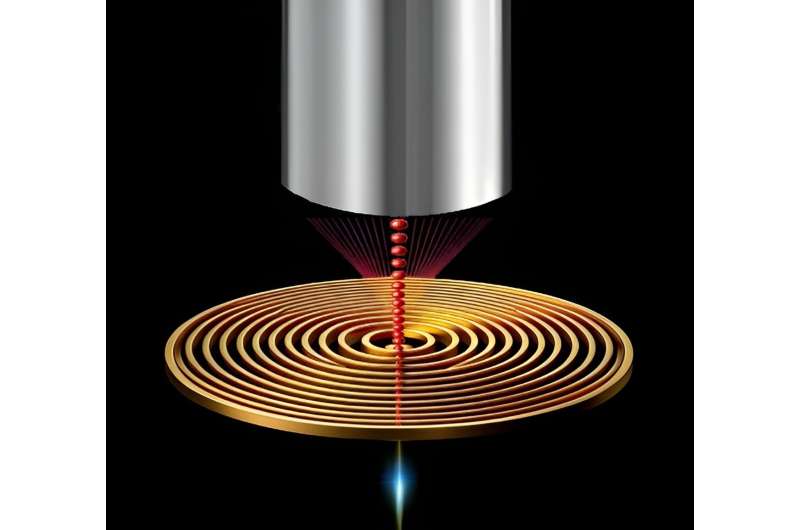This article has been reviewed according to Science X's editorial process and policies. Editors have highlighted the following attributes while ensuring the content's credibility:
fact-checked
peer-reviewed publication
trusted source
proofread
Breakthrough in single-photon integration holds promise for quantum computing, cryptography

A recent study has unveiled a significant advancement toward the on-chip integration of single-photon sources at room temperature. This achievement represents a significant step forward in the field of quantum photonics and holds promise for various applications, including quantum computing, cryptography, and sensing.
The key innovation lies in implementing a hybrid metal–dielectric bullseye antenna, which delivers exceptional photon directionality. This novel antenna design allows for the efficient back-excitation of photons by placing the emitter within a subwavelength hole positioned at the center of the antenna. This configuration enables both direct back-excitation and highly efficient front coupling of emission to low numerical aperture optics or optical fibers.
The study demonstrates the versatility of this concept by fabricating devices containing either colloidal quantum dots or nanodiamonds containing silicon-vacancy centers, both are excellent single photon emitters even at room temperature. These emitters were accurately positioned using two distinct nanopositioning methods.
Remarkably, both types of back-excited devices exhibited front collection efficiencies of approximately 70% at numerical apertures as low as 0.5. This means one can use very simple and compact optical elements and still collect most of the photons into the desired channel or accurately send the emitted photons into a nearby optical fiber without the need for any additional coupling optics.
This is a key ingredient in integrating quantum light sources into real quantum systems. This streamlined process promises to simplify future integration efforts and accelerate the realization of practical quantum photonic devices.
The research paper titled "Room-Temperature Fiber-Coupled Single-Photon Sources based on Colloidal Quantum Dots and SiV Centers in Back-Excited Nanoantennas" is published in Nano Letters.
The work was spearheaded by Boaz Lubotzky during his Ph.D. research, along with Prof. Ronen Rapaport from the Racah Institute of Physics at The Hebrew University of Jerusalem, in collaboration with teams from Los Alamos National Laboratory and from Ulm University in Germany.
Lubotzky commented on the significance of this achievement, stating, "By overcoming key challenges associated with on-chip integration of single-photon sources, we have opened up exciting new possibilities for the development of advanced quantum technologies."
The successful integration of single-photon sources onto tiny chips at room temperature, achieved through the innovative use of a hybrid metal–dielectric bullseye antenna, has immediate applications in advancing quantum cryptography for secure communication, improving sensing technologies, and streamlining the integration process for practical quantum photonic devices.
The study's findings open doors for commercial applications and the development of new products in the burgeoning field of quantum technologies.
More information: Boaz Lubotzky et al, Room-Temperature Fiber-Coupled Single-Photon Sources based on Colloidal Quantum Dots and SiV Centers in Back-Excited Nanoantennas, Nano Letters (2024). DOI: 10.1021/acs.nanolett.3c03672
Journal information: Nano Letters
Provided by Hebrew University of Jerusalem



















